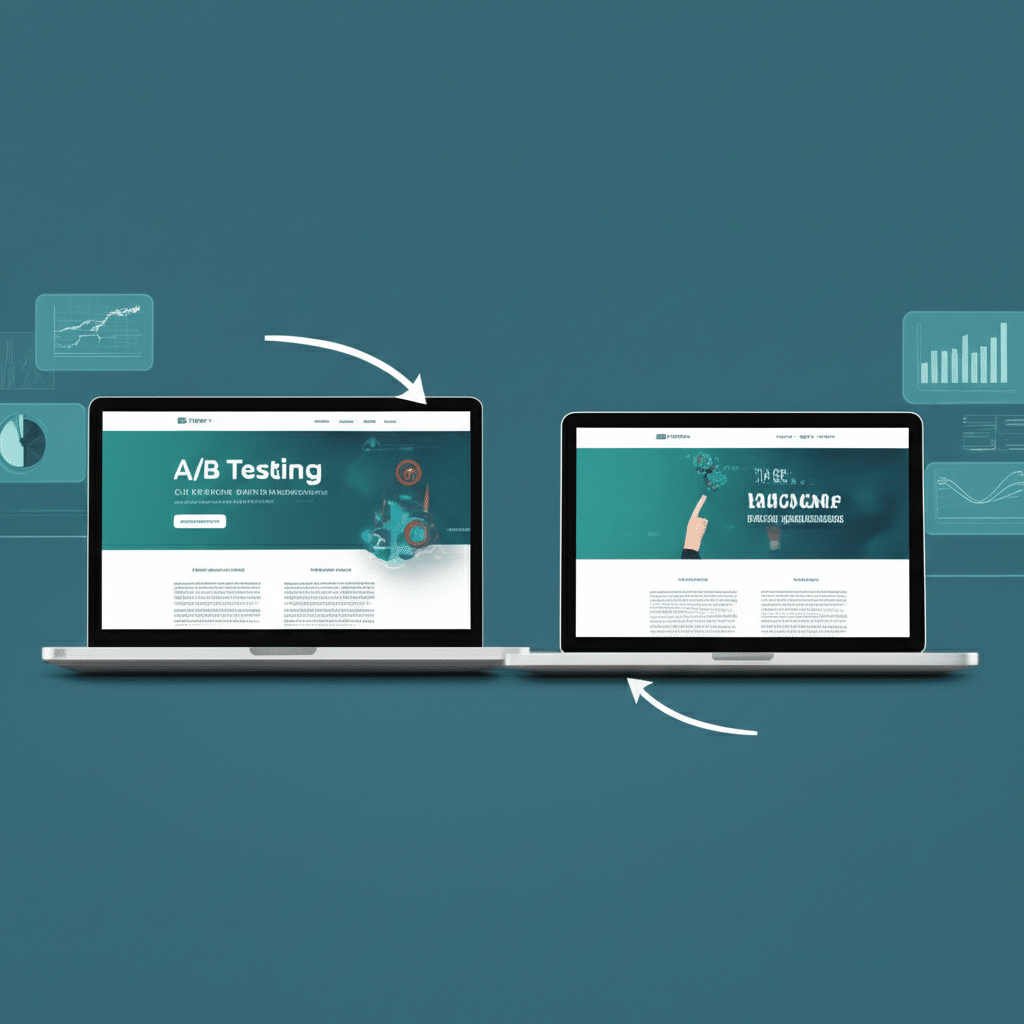Ever feel like you’re throwing spaghetti at the wall, hoping something sticks when it comes to your website? Stop guessing and start optimizing with A/B testing! It’s the secret weapon used by successful businesses to transform their websites from average performers to conversion powerhouses. Discover how this powerful technique can unlock your website’s full potential and drive real results.
What is A/B Testing for Website Optimization?
A/B testing, also known as split testing, is a method of comparing two versions of a webpage or app against each other to determine which one performs better. Essentially, you create two variations (A and B) of a single element, such as a headline, call-to-action button, or image, and then show each version to a random segment of your audience. By analyzing key metrics like conversion rates, click-through rates, and bounce rates, you can identify which variation resonates more effectively with your visitors and drives the desired outcome. This data-driven approach eliminates guesswork and empowers you to make informed decisions about your website’s design and content.
Why is A/B Testing Crucial for Website Optimization?
In today’s competitive digital landscape, website optimization is paramount to success. A/B testing for website optimization provides invaluable insights into user behavior and preferences. By understanding what works and what doesn’t, you can refine your website to maximize conversions, improve user experience, and ultimately achieve your business objectives. Whether you’re aiming to increase sales, generate leads, or boost engagement, A/B testing offers a systematic approach to achieving measurable improvements.
Benefits of A/B Testing
Implementing A/B testing for website optimization offers a multitude of advantages:
* **Data-Driven Decisions:** Move beyond gut feelings and make informed decisions based on real user data.
* **Improved Conversion Rates:** Optimize key elements to guide visitors towards desired actions, such as making a purchase or signing up for a newsletter.
* **Reduced Bounce Rates:** Identify and fix elements that cause visitors to leave your website prematurely, keeping them engaged and exploring your content.
* **Enhanced User Experience:** Create a more user-friendly and intuitive website by understanding what resonates with your target audience.
* **Increased ROI:** By optimizing your website for conversions, you can maximize the return on your marketing investments.
How to Conduct A/B Testing Effectively
Defining Your Goals and KPIs
Before launching any A/B test, clearly define your objectives and the key performance indicators (KPIs) you’ll use to measure success. Are you aiming to increase click-through rates on a specific call-to-action button? Or perhaps you want to reduce cart abandonment rates? Having clear goals will guide your testing strategy and ensure you’re focusing on the right metrics.
Identifying Test Elements
Choose specific elements on your webpage to test, such as headlines, images, button colors, form fields, or even the overall layout. Start with elements that are likely to have the biggest impact on your desired outcome.
Creating Variations
Develop two versions of the chosen element (A and B) with distinct changes. Make sure the variations are significantly different enough to produce measurable results.
Running the Test
Use A/B testing software to randomly split your website traffic between the two variations. Ensure the test runs for a sufficient duration to gather statistically significant data.
Analyzing the Results
Once the test is complete, analyze the data to determine which variation performed better based on your pre-defined KPIs. The winning variation should then be implemented on your website.
Choosing the Right A/B Testing Tools
Several A/B testing tools are available to streamline the testing process. Popular options include Optimizely, VWO, Google Optimize, and AB Tasty. These tools offer features such as visual editors, advanced targeting options, and detailed reporting, making it easier to manage and analyze your A/B tests.
Common A/B Testing Mistakes to Avoid
* **Testing too many elements at once:** Focus on one element at a time to isolate the impact of each change.
* **Ending tests too early:** Allow sufficient time to gather statistically significant data before drawing conclusions.
* **Ignoring statistical significance:** Ensure your results are statistically significant to avoid implementing changes based on random fluctuations.
* **Not iterating:** A/B testing is an ongoing process. Continuously test and refine your website to achieve optimal performance.
A/B Testing for Mobile Optimization
With the increasing dominance of mobile devices, optimizing your website for mobile users is crucial. A/B testing can be used to test different mobile-specific elements, such as button placement, font sizes, and navigation menus, to ensure a seamless mobile experience.
Beyond Basic A/B Testing: Multivariate Testing
For more complex scenarios, consider multivariate testing, which allows you to test multiple variations of multiple elements simultaneously. While more complex, multivariate testing can provide deeper insights into how different elements interact with each other.
A/B testing for website optimization is an essential tool for any business seeking to improve its online presence. By embracing a data-driven approach and continuously testing and refining your website, you can unlock its full potential, drive conversions, and achieve your business objectives. Start optimizing today and watch your website transform into a high-performing asset. What are you waiting for? Start A/B testing and share your experiences in the comments below!













